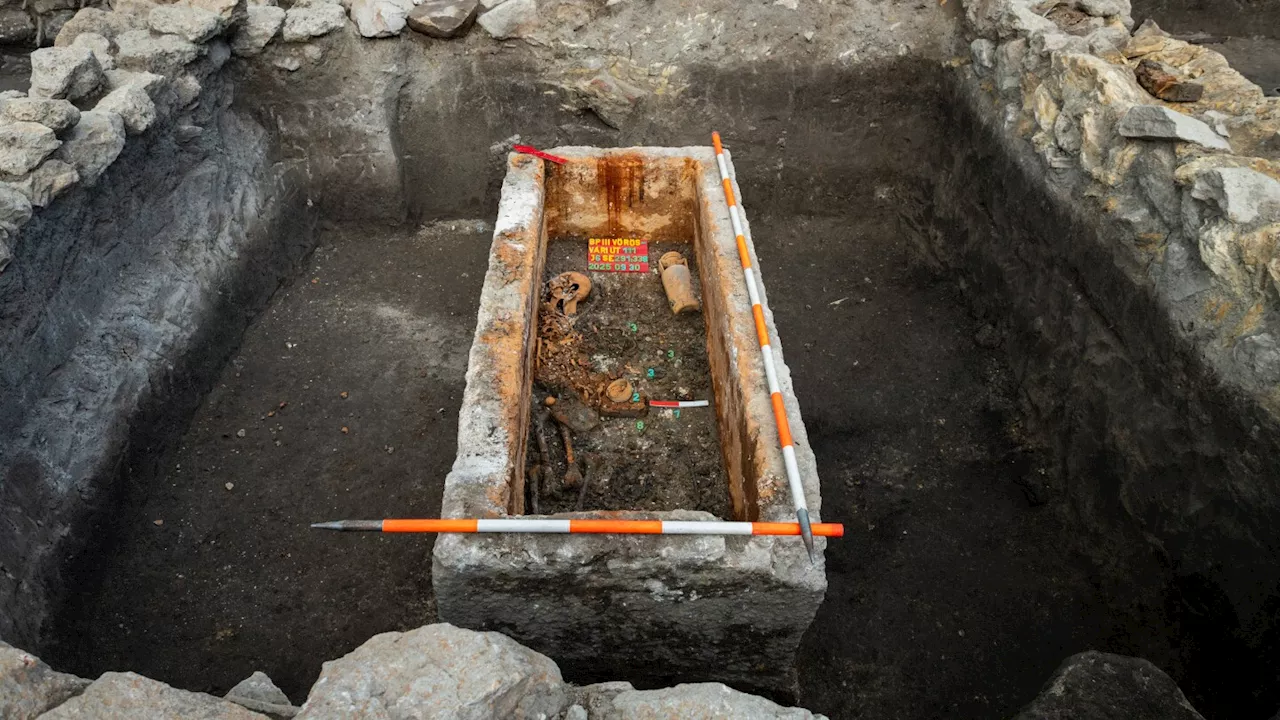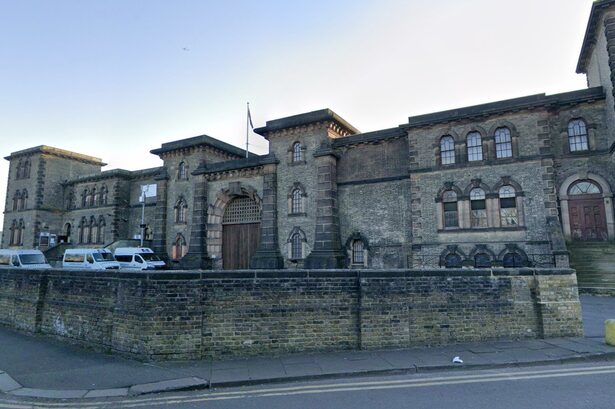UPDATE: A remarkable archaeological find is unfolding in Budapest as a 1,700-year-old Roman sarcophagus has just been unearthed, providing unprecedented insights into the life of a young woman from ancient times. Discovered in the Óbuda district, this well-preserved limestone coffin was sealed for centuries, offering a rare glimpse into the past.
Archaeologists from the Budapest History Museum made the discovery during a large-scale excavation aimed at uncovering remnants of the ancient Roman settlement of Aquincum. The sarcophagus, still intact with its stone lid secured by metal clamps and molten lead, was revealed after careful excavation. Researchers were astonished to find a complete skeleton along with a treasure trove of artifacts.
Lead archaeologist Gabriella Fényes stated, “The peculiarity of this finding is that it was hermetically sealed. It was not disturbed previously, so it was intact.” This extraordinary preservation hints at the significance of the individual buried within, believed to be a young woman, as suggested by the size of the skeleton and the artifacts found alongside it.
Among the astonishing items recovered are 140 coins, two intact glass vessels, bronze figures, and a bone hairpin, all of which point to the deceased’s higher social status. “The objects were items given to the deceased by her relatives for her eternal journey,” said Fényes, emphasizing the care taken in her burial. The artifacts reflect not only the wealth of the individual but also the love and devotion of her family.
The sarcophagus was located among the ruins of a section of Aquincum that had been vacated in the 3rd century and later repurposed as a burial ground. Nearby, researchers also uncovered a Roman aqueduct and additional graves, but none matched the richness or pristine condition of this sealed tomb.
As anthropologists prepare to examine the young woman’s remains, they aim to learn more about her age, health, and origins. The ongoing analysis is expected to yield further insights into life during the Roman period in what is now Hungary, which was then part of the province of Pannonia.
Gergely Kostyál, a Roman-period specialist and co-leader of the excavation, noted, “It is truly rare to find a sarcophagus like this, untouched and never used before.” He added that this find suggests the deceased was likely of considerable means.
Excavators are also excited about the potential for additional discoveries, having removed a layer of mud from inside the coffin that could still contain jewelry and other personal items. “I suspect we could find jewelry,” Fényes remarked, hoping to uncover further treasures during ongoing sifting efforts.
This discovery not only holds scientific significance but also resonates emotionally. Fényes expressed her deep connection to the find, stating, “I was very touched by the care and expression of love that we were able to get a glimpse of.” This glimpse into the past serves as a poignant reminder of the human stories that span centuries.
As the excavation continues, the archaeological community and history enthusiasts worldwide will be watching closely for additional updates. This remarkable find in Budapest is not just a relic of the past; it is a testament to the enduring connections of love and care that transcend time.







